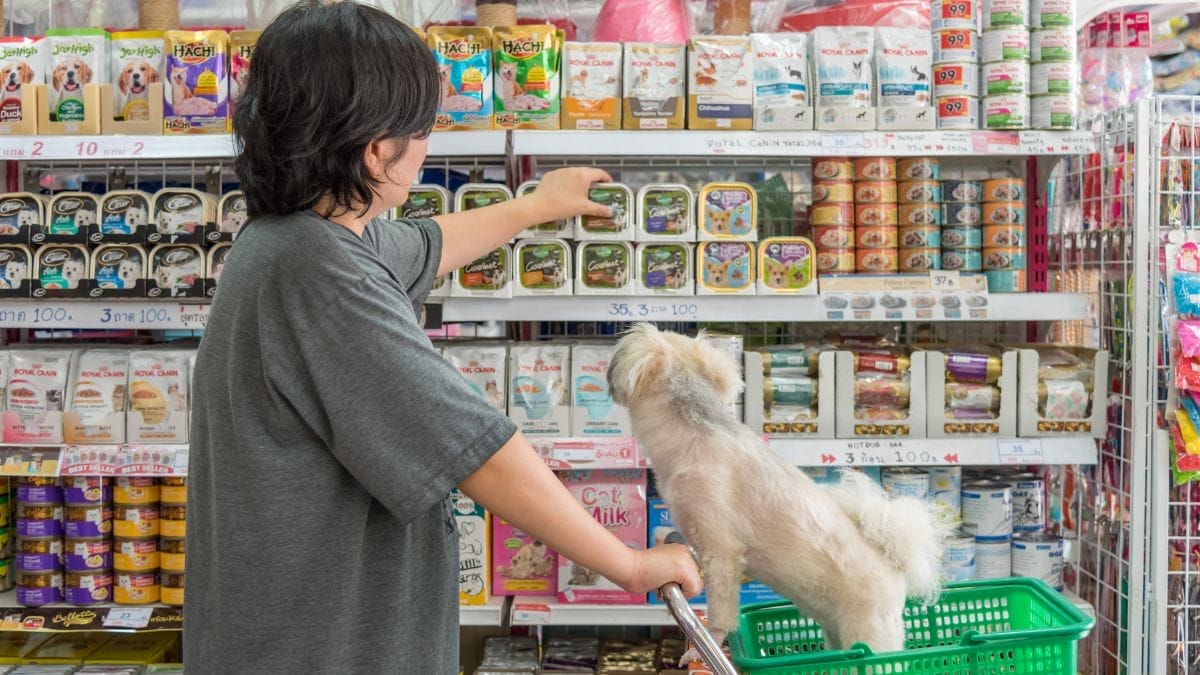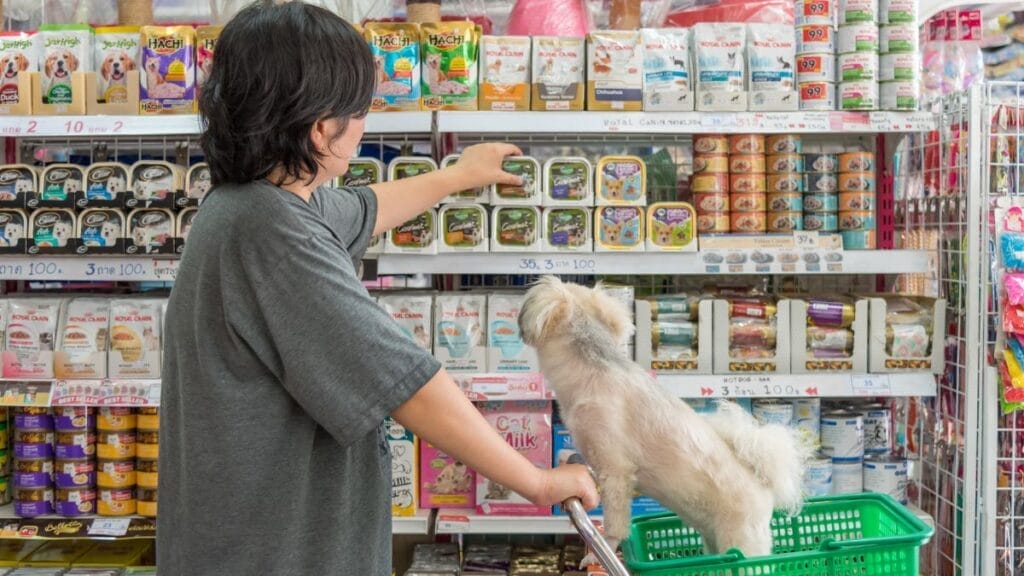This post was created with help from AI tools and carefully reviewed by a human (Muntaseer Rahman) . For more on how we use AI on this site, check out our Editorial Policy.
Check Out These FREE Tools We Made JUST For You!
7 Essential Qualities Of A Top-Notch Pet Store [Checklist]

Pet owners spent an average of $460 in 2013 (annually), which increased to $770 in 2022. However, currently, 1700 legal pet accessory shops are operating in the U.S.A. That means even though the field is large, it is crowded. So, to make yourself stand apart and draw more attention, your store must attain some essential qualities.
A top-notch pet store must focus on selecting relevant products and offer exceptional customer service. Additionally, a profitable pet store should have seasonal offers and provide helpful instructions with every product. It should also offer the option to buy in person.
It’s not that hard to implement these qualities in your business. If you infuse these characteristics into your business plan, your chances of being successful will be much higher. So, what are we waiting for? Let’s get started.
Key Takeaways
- Any successful business must specialize in one category in the initial stage.
- If your product is somewhat new in the industry, you must educate or spread awareness among the buyers.
- Don’t underestimate the power of human communication while selecting modes of interacting with visitors.
- A clean & beautifully organized store increases the conversion rate.
- If you want to be unique to retail pet shops, focus on manufacturing or designing pet products.
7 Qualities A Top-Notch Pet Store Must Maintain
1. Seasonal Offers
Every top-notch store runs seasonal offers. It’s the best way to be attractive throughout the year. You pick the best players in the pet business and notice how they promise different offers and discounts according to events.
For example, the store might offer a World Cup discount code for a limited time during the World Cup season. The same goes for occasions like Halloween, Christmas, etc.
Change your store decoration to match the vibe of the festival. You don’t have to have a real retail store for that. You can update your website’s theme as well. After that, announce discount codes, sales, or contests to make the experience fun.
When buyers know you give offers at every festival to help people buy more, they will automatically choose you for their future endeavors. As long as you sell quality products, this method will establish you as the number one choice of previous buyers.
You will be surprised that 91% of online buyers have confessed to looking for discount coupons before buying something.
Even though it is difficult to figure out the data for offline buyers, I am sure the numbers are close. The new generation of buyers is more educated than you would expect. And, they don’t mind trying a new shop’s products if they get a favorable deal.
So, you better use this tendency to qualify as the favorite pet shop in town.
2. Opportunity To Buy-In-Person
Around 82% of online shoppers have reported their preference for feeling & touching the product before the purchase.
I guess that’s why the demand for an offline retail store will prevail always.
So, if you want to stand out from the rest of the 1700 pet shops operating in the U.S.A., try establishing a physical outlet in various locations.
It will give interested buyers who live nearby a chance to experience your product’s quality.
It doesn’t mean you have to raise a large amount of money as a beginner. Considering the risks, start promoting and selling online in the initial stage. Once you have gained some recognition for your products, you can pick a suitable location and open an outlet.
A physical outlet is also a great way to convey your brand’s reputation. Some hard-to-convince online shoppers check whether the brand owns a real shop. If not, they don’t trust the brand’s authenticity that easily. So, having a physical presence can help you convince those difficult buyers as well.
And, of course, there are pet parents who hate online shopping. And, trust me, the number is not insignificant at all.
According to a recent survey, almost 47% of participants confessed that they hate online shopping.
If there were an opportunity for them to buy the products in person, they would happily do so. Since most small businesses prefer operating their business online (due to the low cost), the customers are deprived of the real-life experience.
I suggest you select a pet niche and sell a variety of unique products from that niche both online and offline. You will definitely pull more customers than your competitors.
3. Handmade Pet Products
There are thousands of pet shops reselling pet accessories. It’s really hard to beat competitors or stand out from the flow. The number one choice for buying retail pet products is Amazon.
However, your shop will instantly attract customers if you sell something handmade. It can be anything from baking treats to painting pet portraits.
The report suggests that the demand for organic & handmade products (in any industry) is increasing at a consistent 9.7% rate every year.
And the number is directly linked to the age group of the majority of pet owners. You see, according to APPA, 50% of current pet owners in the U.S.A. are either Gen-Z or millennials.
The percentage was 42% in 2018 and 46% in 2020.
This younger generation of pet owners has started the trend of looking for the best quality, natural, and handmade products for their pets. They are extremely sensitive when it comes to purchasing pet care items.
That’s why a shop with unique, customized, and handmade products easily attracts them. For example, pet food is available at $18 on Amazon.
But I know organic pet food businesses that charge way above this price and still get enough customers. I think if you can fight the temptation to resell products, you can easily build a long-lasting brand in the pet niche.
4. Instructions On How To Use An Item
I know it’s most cost-effective to automate your business. For example, you can use artificial intelligence to send answer templates to your customers. It takes away a big hassle since no human intervention is needed (almost). Many small pet businesses with low budgets are finding this method useful.
But do the customers think the same?
Reportedly, around 62% of online buyers complain that their interaction with the seller seems too artificial.
And they don’t prefer it. Also, 40% of online buyers need reassurance before making the final purchase.
It tells us that businesses that rely on A.I. templates are missing out on a lot of potential conversions. So, for your pet shop, try reducing the involvement of artificial intelligence while answering your customers.
You can hire a business page moderator to give customers the attention they desire. Sometimes, new pet parents get confused while shopping for their pets. That’s why it’s a good practice to ask what type of pet the customer has.
If you feel like the customer is hesitating, find out how long they have been parents. If it’s their first time, they might need your assistance. Instruct them on how to use the products in their daily life and how they will help the animals.
It might sound like a long process, but such genuine interaction will eventually build a loyal customer base for your shop.
5. Employees Who Actually Care About Animals
If you have a pet shop in town, it’s most likely that you will hire employees to manage it. However, unlike other retail shops, a top-notch pet shop must have employees who deeply care about animals. Imagine selling baby formulas.
Would you buy it from a seller who seems like he has no idea what a newborn baby needs? What if it seems like the seller only cares about the most expensive brand on the shelf? Would you trust the shop to buy baby items ever again?
The same thing happens with pet parents. Their pets are no less than their kids. They wouldn’t buy something just because it is trending or affordable. And, if you or your employees don’t come across someone who cares or knows about animals, you will lose customers.
Many pet businesses miss this one factor while planning. And, despite doing everything right, customers still hesitate. So, if you are not an expert in pet care, hire someone who is.
That’s the easy way out.
6. Pet Themed Store Interior
Reportedly, 95% of customers think store appearance is an important factor.
I know it’s too much to ask if you don’t have enough budget to launch a pet shop. But once you break even and start making a profit, invest some money in your store’s interior. It’s what differentiates an average store from a reputable brand.
For online sellers, there’s not much to do. However, you can go crazy with a real outlet. For example, one idea is painting the store wall with cute color pallets and paw prints. It’s the most visual thing you can do to make your shop look unique.
Apart from the interior, give much importance to shelf organization and cleanliness.
7. Safe Play Zone For Pets
Customers should have enough opportunities to spend more time in your store. Maybe a customer will walk in for a quick purchase with the pet itself. You can create a small play zone where they can put the pet and shop freely.
It’s a great tactic if you have just opened and want customers to explore all your shelves.
But the play zone must be pet-friendly and safe. Keep some engaging toys like puzzles to distract pets for a while.
What Makes A Pet Shop Unique?
Here are the top 3 things that make any pet shop unique in its own way.
1. Focused Specialization
You must have heard a lot about focusing on one niche. But to be honest, only focusing on one niche is not important. You have to specialize in that category as well.
For example, if you are selling homemade or organic pet food, make sure you go deep into the niche.
Apart from fresh food made with organic ingredients, offer sugar-free options as well.
For treats and other desserts, add an alternative for obese pets. It means deserts made from natural sugar like honey.
Of course, a baker would instantly think of many ideas. Brainstorm a little on the particular niche you have chosen.
2. Lots Of Variety In A Single Niche
An average pet shop only keeps products for cats and dogs. For other species like parrots, ferrets, and bunnies, you have to search for pet-specific stores. But, did you know 326000 families in the U.S.A. offer shelter to ferrets?
Also, 14.7 million households have at least one aquarium. That positions fish as the third most favorite pet in America (after dogs & cats, of course).
It means you have a high scope of success if your store specializes in pet products for domestic animals other than cats or dogs. For example, you can sell fish-keeping accessories from aquariums to colored lights in your store. But the key is to add lots of variety.
If you are selling aquarium lights, make sure you keep options with various ranges of brightness, temperature & color. The same goes for food or aquarium shapes sizes.
3. Educating Customers About Pet Behaviors
Want to sell technologically advanced pet products? Nowadays, pet GPS trackers, automatic slow feeders, etc, have become quite famous in the pet community. But in the start, someone had to educate pet owners on what these products can do for their pets.
For example, with an automatic feeder, the machine dispenses a small portion of food from time to time. It prevents the pet from eating everything in one go and getting sick.
That’s why successful pet businesses not only promote their products but also spread awareness about them.
Before You Leave!
Now that you know what a top-notch pet store must have, it’s time to actually build it. For that, check out my next article on how to set up a pet retail store.
About Author
Hello, I’m Muntaseer Rahman, the owner of AcuarioPets.com. I’m passionate about aquarium pets like shrimps, snails, crabs, and crayfish. I’ve created this website to share my expertise and help you provide better care for these amazing pets.
Disclaimer
This site is owned and operated by Muntaseer Rahman. AcuarioPets.com is a participant in the Amazon Services LLC Associates Program, an affiliate advertising program designed to provide a means for sites to earn advertising fees by advertising and linking to Amazon.com. This site also participates in other affiliate programs and is compensated for referring traffic and business to these companies.







